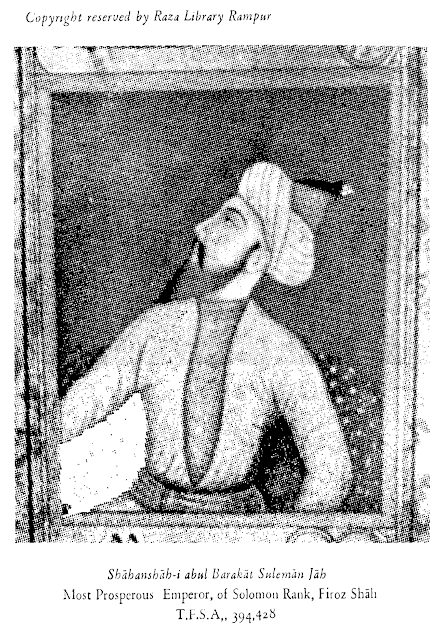The Tughlaq Sultans who ruled India in 14th century, were from that part of Khurasan which is now western Afghanistan. Belonging to the Qarauna/Negudari Mongol tribe, they spoke Mongolian and were related to, but distinct from, the Hazaras. It is important to note that Tughlaq was not the name of their tribe but rather the title of the dynasty's founder, who hailed from Khurasan according to Shams Siraj Afif, a contemporary courtier [1]. Ibn Battuta, another contemporary figure who served under Muhammad bin Tughlaq, described the sultan's homeland as a mountainous area between Turkestan and Sindh, corresponding to the regions of Ghor and the hilly tract near Herat. [2]
They were part of the marauding Mongol armies of the 13th century. According to Isami (author of Futuḥ al-Salāṭīn, written in the 1350s), Sultan Balban’s son was killed by a Qarauna horseman of the Mongol army in 1285 AD [3]. In his elegy written upon the death of Balban’s son, Amir Khusrau described his captor as a Qarauna:
“He sat on his horse like a leopard on a hill. His open mouth smelled like an armpit, whiskers fell from his chin like pubic hair.” [4]
The Qaraunas appear to have been the offspring of Mongol men and Indian women captured from Punjab and Sind during their raids. "Qara" means black in both Mongolian and Turki languages, suggesting a darker complexion. Marco Polo described them as "half-breeds" and equated the term Qarauna with Negudari.
"Many towns and villages across this plain have tall, thick earthen ramparts to protect them against the bands of marauders known as Qaraunas who infest these parts. And why are they called Qaraunas, which means ‘mongrels’ in our language? When these people set out to rob and pillage the land, they cast diabolical spells that turn daylight to darkness until it is virtually impossible to see anything. And they spread this darkness over an area that takes seven days to cross. They know the lie of the land inside out, so when they have summoned the darkness they ride side by side – sometimes as many as 10,000 at once, sometimes more, sometimes less – and commandeer the plain they mean to rob so utterly that no one in their path can escape them and everything, man, beast and object, is liable to be seized. And when they have captured the men, they kill all the elderly and cart off the young to sell them as serfs and slaves. Their king is called Neguder. And this Neguder went with a good 10,000 of his own men to the court of Chagatai, a brother of the Great Khan, and stayed with him, because Chagatai was his uncle and a mighty lord." [5]
Mughal king Babur in his description of Kabul (i.e. Kabulistan) wrote that Hazaras and Negudaris lived in the western mountains (to the west of Kabulistan) and some of them spoke Mongolian language at that time.
"On the west it (Kabul) has the mountain region in which are Karnud (?) and Ghor, now the refuge and dwelling places of the Hazara and Nikudari tribes." [6]
"In the western mountains are the Hazara and Nikudari tribes some of whom speak the Mughuli tongue."[7]

No comments:
Post a Comment